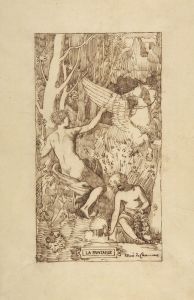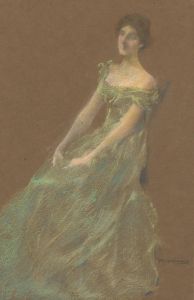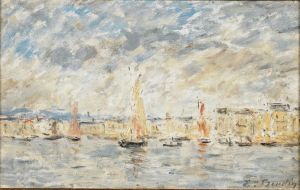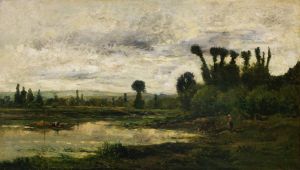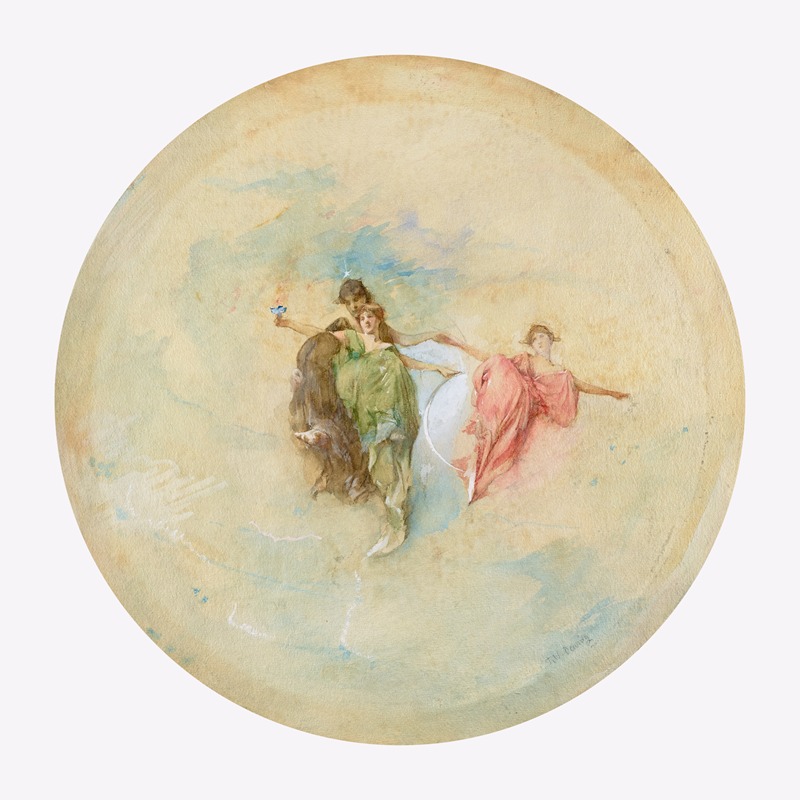
Dawn
A hand-painted replica of Thomas Wilmer Dewing’s masterpiece Dawn, meticulously crafted by professional artists to capture the true essence of the original. Each piece is created with museum-quality canvas and rare mineral pigments, carefully painted by experienced artists with delicate brushstrokes and rich, layered colors to perfectly recreate the texture of the original artwork. Unlike machine-printed reproductions, this hand-painted version brings the painting to life, infused with the artist’s emotions and skill in every stroke. Whether for personal collection or home decoration, it instantly elevates the artistic atmosphere of any space.
Thomas Wilmer Dewing's painting Dawn is a notable example of his work as an American Tonalist painter. Created in 1910, the artwork reflects Dewing's characteristic style, which often features ethereal, dreamlike depictions of women in quiet, contemplative settings. Dewing was known for his focus on mood and atmosphere, often employing muted color palettes and soft, diffused lighting to evoke a sense of serenity and introspection.
In Dawn, Dewing portrays a group of women seated in a tranquil, undefined landscape. The figures are dressed in flowing, classical garments, and their poses suggest a sense of calm and introspection. The composition emphasizes harmony and balance, with the figures arranged in a way that draws the viewer's eye across the canvas. The background is intentionally vague, with soft, blended tones that create an almost otherworldly ambiance. This lack of specific detail in the setting allows the viewer to focus on the figures and the overall mood of the piece.
Dewing's work is often associated with the Aesthetic Movement, which emphasized beauty and artistic expression over narrative or moral content. His paintings frequently explore themes of femininity, grace, and the interplay between the human figure and its surroundings. Dawn exemplifies these themes, showcasing Dewing's ability to create a sense of timeless elegance and quiet introspection.
The painting is part of the collection at the Smithsonian American Art Museum in Washington, D.C. It was acquired as part of the museum's efforts to preserve and showcase American art from the late 19th and early 20th centuries. Dewing's work, including Dawn, is often celebrated for its contribution to the Tonalist movement, which sought to capture the emotional and atmospheric qualities of a scene rather than its precise details.
Thomas Wilmer Dewing (1851–1938) was a prominent figure in American art during his lifetime. He studied at the Académie Julian in Paris and later became associated with the art colony in Cornish, New Hampshire. His works are characterized by their poetic quality and their focus on the interplay of light, color, and form. Dawn remains an enduring example of his artistic vision and his ability to convey a sense of quiet beauty through his paintings.





